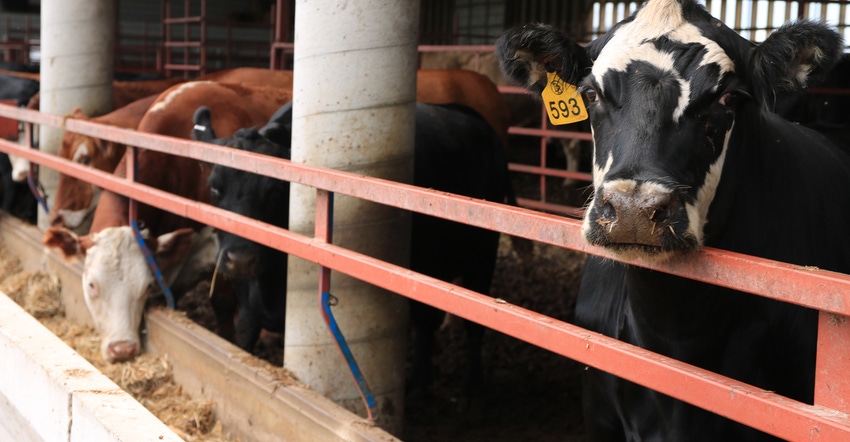
Cover crops have home-run potential as forage feed stock for beef cattle, says University of Illinois Extension beef specialist Travis Meteer. But the potential comes with a good deal of variability, which is why he says a $22 forage nutrient analysis is worth the money.
As Illinois farmers harvest cover crops from acreage where they were prevented from planting a cash crop in the spring, Meteer says the key to a successful harvest will be hitting targets for dry matter: 50% for baleage, and 35% to 40% for silage.
The dry hay window is closed or closing, he says. Baleage, silage and grazing are the best options left for farmers facing wet conditions for cover crop harvesting.
“I’ve had several phone calls where folks have tried to make dry hay out of millet, oats, sorghum-sudans, and they couldn’t get it to dry down,” Meteer says, noting with forecasts of more rain, many panicked as they sought someone to wrap their hay in a tube line. “Don’t panic, just plan ahead and harvest that stuff as baleage. It’s going to make way better feed than some twice rained on straw.”
For lush cover crop harvests, he suggests supplementing dry matter with palatable cornstalk bales or grass, not alfalfa hay. He also says its best for forage to have a target of 50% dry matter to reach optimal weighted gains.
“I’ve also went to a few places where they thought they got sorghum-sudans or sudangrass or millet dry and baled it. But when you put a probe in these bales, they’re 30% moisture or higher, and they are heating,” Meteer says. “There’s going to be some failed stuff out there. Buyer beware on buying some of this. I wouldn’t buy it off Facebook. I would ask for a nutrient analysis if you’re buying cover crop hay.”
Cover crops can become a foundational component of growing diets and have potential for finisher diets. Once producers or nutritionists get their forage test results, they can determine how to best portion different feedstocks to get to a balanced ration.
“You have to watch the energy profiles on something like this if you’re going to incorporate it into feedlot rations. We don’t want to decrease the energy density too much,” Meteer says.
Calcium-to-phosphorus ratios in cover crops tend to be more one-to-one, so he says high-phosphorus byproducts can throw off the proper mineral balance.
“We’re using cover crops on our farm, and it’s giving us more grazing days, and I think there’s a huge opportunity, no matter what segment of the beef cattle industry you’re in, to use cover crops,” Meteer says. “But there’s some things we’ve got to watch.”
Grazing precautions
As sorghum-sudan cover crop stands regrow, Meeter says farmers should be on the lookout for prussic acid, which is particularly prevalent after frosts and other stressful events. The best prevention is to remove grazing animals after frost for at least seven days, while also ensuring the animals are filled when they go out to graze, so they won’t chew to the ground.
“If you lock them away from it and you’re always turning hungry cattle out to the cover crop, you’re probably creating more problems, so don’t overthink this,” he says, noting prussic acid is generally not an issue when sorghum-sudan is harvest as dry hay or silage.
Prevented plant acreage that received fertilizer and no cash crop could produce nitrate-poisoning feed. A forage test will determine if there’s too much nitrate in a plant, but preventing cattle from eating the bottom third of the stalk will also help.
Grass tetany can also be an issue with lush cover crop mixes due to be grazed here yet this fall. High-brassica mixes are the most susceptible. Supplementing magnesium, ensuring salt is available, and adding more dry matter and energy will ultimately help producers make the best out of their cover crop harvest.
About the Author(s)
You May Also Like




